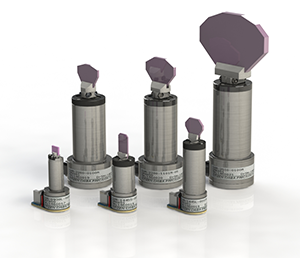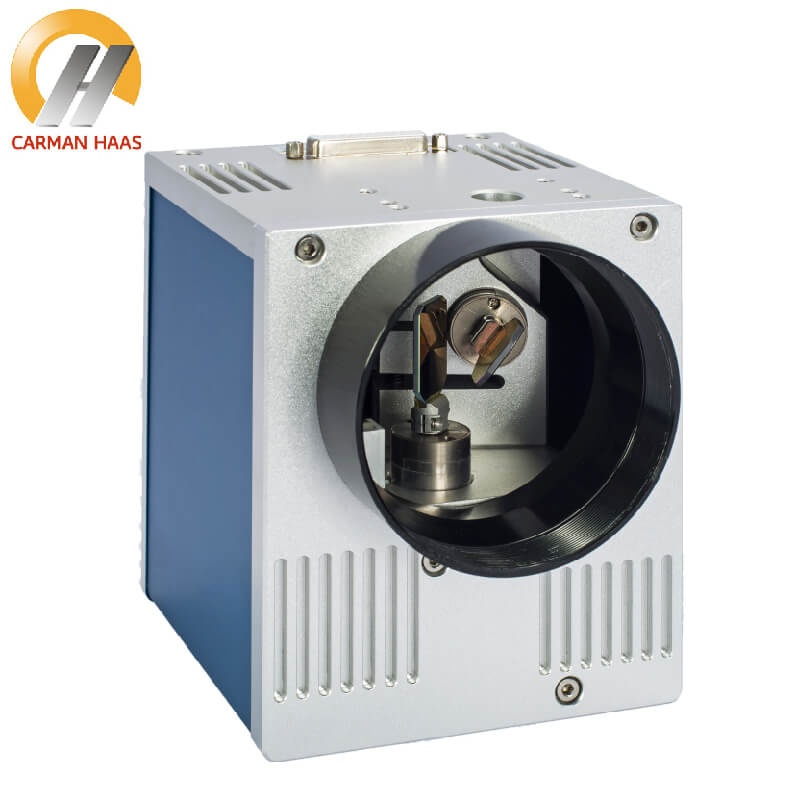Trick Applications of a Galvanometer Scanner in Numerous Scientific Study Area
Galvanometer scanners have become integral to different clinical research areas, providing improved accuracy in applications varying from biomedical imaging to environmental tracking. Their ability to facilitate high-resolution imaging methods, such as confocal microscopy, plays an essential duty in progressing our understanding of cellular frameworks. In material handling, these tools boost the precision of laser cutting and welding. As we check out the multifaceted applications of galvanometer scanners, it becomes apparent that their effect expands much past plain technical capabilities, questioning concerning their future possibility in emerging research study areas.
Biomedical Imaging

In confocal microscopy, galvanometer scanners facilitate the purchase of pictures with boosted resolution and comparison, permitting researchers to picture mobile parts in vivo. The ability to promptly capture several focal aircrafts improves the three-dimensional reconstruction of cells, providing vital insights into their style and feature.

Moreover, the rapid scanning abilities of galvanometer systems add to advancements in dynamic imaging applications, such as checking cellular reactions to stimulations. Hence, galvanometer scanners are essential tools in the field of biomedical imaging, advancing study and professional diagnostics through their precision and efficiency.
Product Handling
Precision in product processing is crucial for accomplishing high-grade cause different industrial applications (galvanometer scanner). Galvanometer scanners play an essential role in boosting this precision by making it possible for exact and rapid motion control during the processing of materials such as polymers, metals, and porcelains. These gadgets promote techniques like laser cutting, welding, and engraving, which require finely-tuned changes to make sure optimum results
In laser cutting, as an example, galvanometer scanners enable intricate styles to be performed with high fidelity, minimizing waste and enhancing manufacturing efficiency. The quick motion abilities enable fast adjustments in the laser beam of light course, which is crucial for maintaining constant reducing high quality across differing material thicknesses. In laser welding applications, the accuracy provided by galvanometer scanners guarantees solid joints with very little thermal distortion, therefore enhancing structural honesty.
In addition, the flexibility of galvanometer scanners to different laser kinds and wavelengths even more widens their energy in material processing. Their capability to function in tandem with innovative software program for real-time monitoring and control includes an additional layer of class, allowing suppliers to attain accurate specs customized to certain applications. Therefore, galvanometer scanners are important beforehand the capacities of product handling technologies.
Optical Characterization
In the realm of optical characterization, the role of galvanometer scanners ends up being progressively significant as they assist in the analysis of numerous optical residential or commercial properties with high precision. These devices allow accurate control of laser beams, enabling scientists to methodically penetrate materials at numerous angles and frequencies. This ability is essential for characterizing the refractive index, absorption coefficient, and scattering residential or commercial properties of varied materials.
Galvanometer scanners are especially effective in methods such as optical comprehensibility tomography (OCT) and laser-induced fluorescence (LIF), where quick scanning is important. By accomplishing high-speed modulation of the laser position, galvanometer scanners improve the temporal resolution of these techniques, resulting in boosted imaging and analysis. In addition, they enable the expedition of click over here complex communications between light and issue, which is essential for recognizing material behaviors under various problems.
Moreover, the combination of galvanometer scanners with spectroscopic strategies increases their utility, enabling extensive spectral evaluation across a variety of wavelengths. This versatility makes them crucial tools in fields such as products science, biomedical study, and nanotechnology, where comprehensive optical characterization is critical for progressing knowledge and development.

Laser Micromachining
The arrival of laser micromachining has reinvented manufacturing procedures, allowing the development of complex structures with unparalleled precision. This technique utilizes high-intensity laser beams to precisely remove material from a substratum, making it possible to make micro-scale components that are essential in different industries. The application of galvanometer scanners in laser micromachining improves the efficiency and accuracy of this procedure by allowing quick and accurate beam positioning.
Galvanometer scanners promote the vibrant control of laser beams, allowing intricate patterns to be engraved or reduced with high integrity. Their quick response times and high-resolution abilities permit the adjustment of laser pulses, which is important for achieving the preferred product Learn More buildings and surface area finishes. This technology is particularly valuable in sectors such as electronics, where the miniaturization of components is important for performance improvement.
Additionally, laser micromachining is significantly being used in the medical area for manufacturing accuracy tools and implants. The combination of laser modern technology and galvanometer scanning not only streamlines manufacturing operations however also lowers waste and boosts overall product utilization, making it a lasting choice for contemporary production obstacles.
Ecological Monitoring
Ecological surveillance has actually become increasingly important in evaluating and handling the health of ecosystems and urban atmospheres. The combination of galvanometer scanners in this area enables precise, fast, and effective data collection, facilitating far better decision-making processes. These scanners are skilled at guiding laser beams or sensors throughout various terrains, enabling high-resolution mapping of ecological criteria such as air top quality, soil structure, and water air pollution.
In air top quality monitoring, galvanometer scanners can be utilized to analyze particulate matter and gaseous toxins, giving real-time information that informs public health and wellness campaigns. For water top quality analyses, these scanners can aid in discovering contaminants galvanometer scanner and gauging physical criteria, thus guaranteeing compliance with ecological guidelines. Additionally, in remote picking up applications, galvanometer scanners improve the ability of satellite and drone systems to capture thorough photos and data of large locations, determining anthropogenic influences and ecological changes.
The flexibility and precision of galvanometer scanners make them important devices in environmental monitoring, contributing substantially to sustainable development efforts and the protection of all-natural resources. As the need for reliable ecological monitoring expands, the duty of these innovative devices will undoubtedly increase further.
Final Thought
In summary, galvanometer scanners serve as vital tools across numerous scientific research study domain names. The adaptability and performance of galvanometer scanners continue to drive developments in these vital areas.
In laser welding applications, the accuracy provided by galvanometer scanners guarantees solid joints with marginal thermal distortion, thereby boosting architectural stability.
Moreover, the adaptability of galvanometer scanners to different laser kinds and wavelengths better widens their utility in product handling. By achieving high-speed inflection of the laser placement, galvanometer scanners enhance the temporal resolution of these approaches, leading to improved imaging and analysis. The application of galvanometer scanners in laser micromachining boosts the efficiency and accuracy of this process by allowing precise and fast light beam positioning.
Galvanometer scanners facilitate the dynamic control of laser light beams, making it possible for intricate patterns to be etched or cut with high integrity.